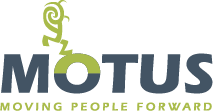Working remotely has become a common occurrence today. The landscape of business and commuting and office buildings is changing. While it might seem counterintuitive, remote workers tend to be more engaged than on-site workers. Employees are able to focus on the tasks at hand. Time and money spent in a commute are diverted back to time spent for work and creating a manageable work-life balance. It can be a win-win for both the employee and the employer. But keeping remote employees engaged is still key. Productivity and timelines can become a bit more nebulous, and relationships and team dynamics can feel stretched. As an employer, engaging your remote workforce could make or break several aspects of your business. Here are some tips to stay on top of it:
Team Meetings, Team Building, and Company Events
Remote workers and employers should always take advantage of a face to face opportunity when available to ensure everyone is on the same page and put a face to an email. Ensure that team meetings are regularly held and request questions and topics before the meeting. Ask for process improvement ideas before meetings to discuss as a group to create “buy-in” and improve the bottom line. Hold company events that give your employees the opportunity to build relationships with those who work both in and out of the office. Having a cohesive team environment is important in any business.
Use Technology
Today’s collaboration tools are easy to use and cost-effective. Utilizing multiple types of communication tools, like Slack, can help ensure open lines of communication within the team. Normalize and automate your communication. Send out company-wide information updates. Technology can ensure that even those who aren’t in the office can be up to date.
Consider All Factors
In terms of productivity, being aware of what is going on in the lives of your employees will be something to consider. Be open and aware of off-site conflicts, holidays, and cultural events. Would a national soccer game affect a firm delivery date? Learning about what might affect your employees allows for future impediments to be monitored and contained.
Be flexible
Trusting remote workers to be diligent and on task even when not being monitored in office builds trust. Micromanaging their time won’t necessarily send a message of mutual trust. Be open to deviate from core-business hours and allow for flexibility to ensure employees stay motivated and on task. Of course, we all have our bottom lines, and deadlines are deadlines, but flexibility in how the process is handled might prove effective with those working out of the office.
Make Clarifications
Being clear about your expectations and the progress of your employees is important, and sometimes technology can’t always cover it. Misunderstandings via email, in a chat, or over text can easily happen. Don’t be afraid to pick up the phone! Don’t be afraid to ask questions and confirm the answer.
Ultimately it is the employee’s responsibility to stay engaged and on task as a remote worker. But being the kind of employer who knows how to engage a remote workforce is also important. Having employees understand the goal and buy-in to the vision is key to a successful remote workforce.







